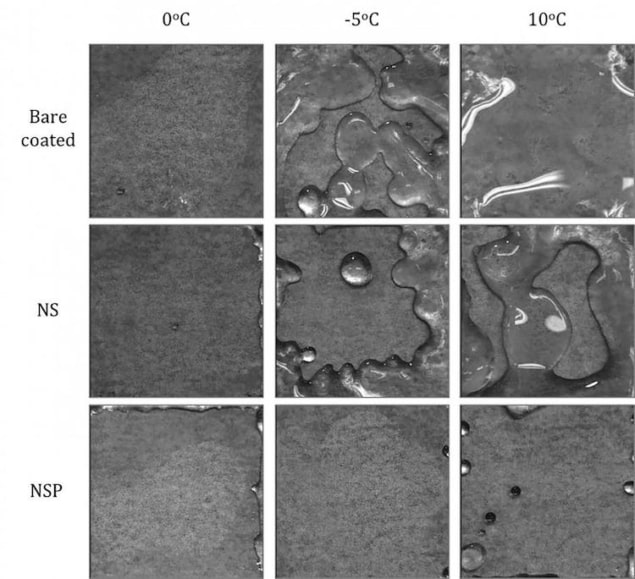Physics World September 3, 2020
Researchers in Vietnam fabricated moth eye structure on the quartz substrate covered with a flat paraffin layer to isolate it in a cold and humid environment. The paraffin layer only stayed on the top of the nanostructure, separated it from the outside environment to obstruct heat energy being transferred to the cold substrate, and prevented the wetting transition, which was observed regularly on the rough surface. Numerous air blocks trapped inside the nanostructure also contributed to delayed heat transfer, leading to an increase in the freezing time of the attached water droplet. The nanostructure coated surface did better in anti-icing, adhesion strength, freezing time, and freezing rain sustainability…read more. Open Access TECHNICAL ARTICLE

Freezing test. Credit: Nguyen Ba Duc